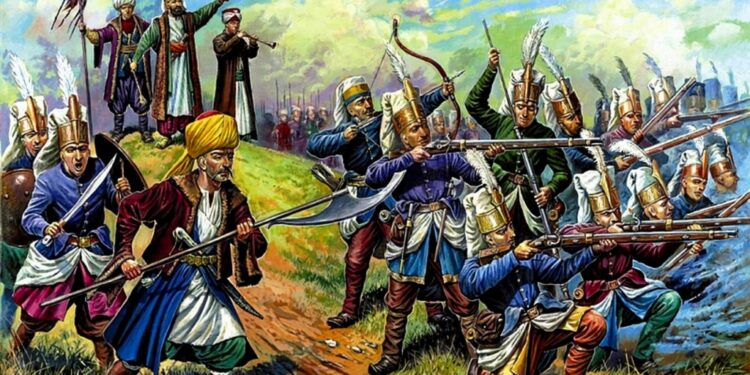It’s 100 years since Turkey’s Grand National Assembly abolished the 1,300-year-old caliphate on 3 March 1924.
The Ottoman Empire was one of the greatest powers in history, and its rulers were among the longest-reigning dynasties in the world. At its peak, the Islamic Ottoman state extended far beyond present-day Turkey, stretching from Egypt and North Africa to the Middle East, Greece, the Balkans (Bulgaria, Romania, Albania, etc.), and even to the gates of Vienna, the capital of Austria.
In the 16th century (1500-1600), the Ottoman Empire was not only a dominant military power but also a culturally diverse society. However, as history often goes, this glory did not last forever. After about two centuries of political crises, the Ottoman Empire eventually disintegrated following World War I.
What led to its downfall? Let’s first go back to its beginnings.
It all started with Osman
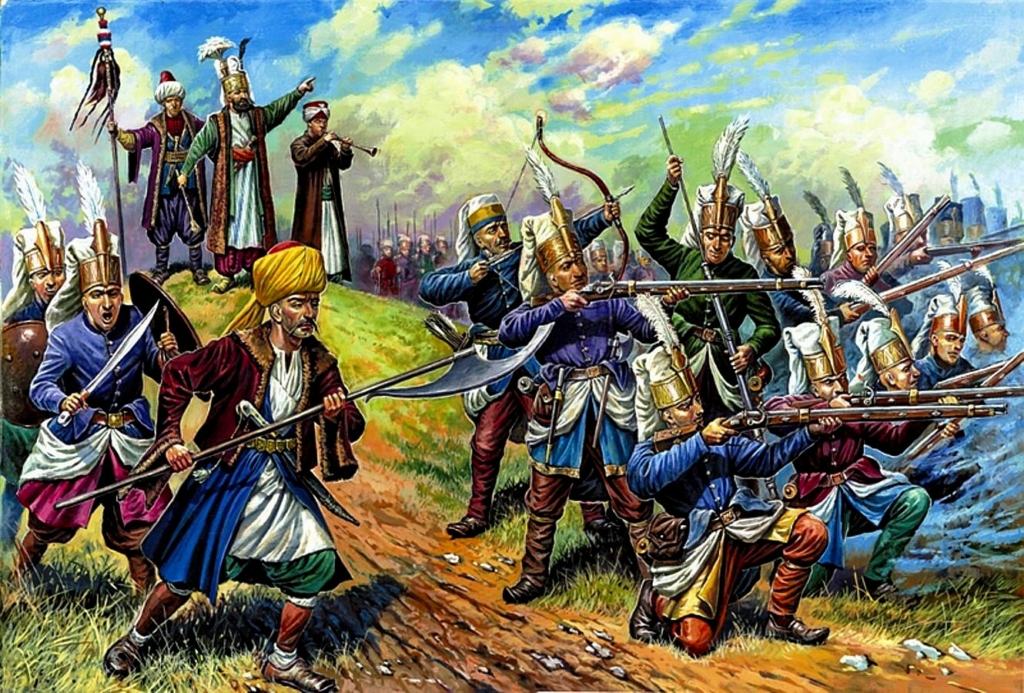
Osman Ghazi is known as the father of the Ottoman dynasty, the first in a long line of military leaders and sultans who ruled the Ottoman Empire for six centuries. The English word “Ottoman” is derived from the Italian pronunciation of Osman’s name.
Osman Ghazi was born in 1258 in the city of Söğüt in Anatolia (modern-day Turkey), and his father was one of the “frontier lords.” At that time, the Muslim Seljuk Sultanate of Rum granted large borderlands to Turkish tribal leaders, and his father was one of those lords.
Osman led one of the many small Islamic emirates in the border region with the Byzantine Empire at the time. However, Osman was not content with leading a small local kingdom. He formed an army of fierce border warriors and advanced towards the Byzantine Empire’s strongholds in Anatolia.
According to some Ottoman accounts of this period, Osman Ghazi dreamed of unifying the entire world under Ottoman rule, symbolized by a giant tree growing from his body and covering the entire world.
Osman’s successors continued the expansion of this border emirate at the expense of its neighbours, particularly the Byzantine Empire. With the rise of Orhan, the nascent state expanded further, laying the groundwork for the formidable Ottoman army, known as the Janissaries, which became the troublesome nightmare of Europe for the next two centuries.
The state was on the brink… it lived years without a sultan
Timur the Lame, a Muslim Mongol leader according to most accounts, paid taxes and attended some religious lessons, but he ruled according to both Islamic and pagan laws! Not only that, but he also nearly destroyed the Ottoman Empire, which was then at the beginning of its strength. Sultan Bayezid I, nicknamed Yıldırım (The Thunderbolt), defeated the Serbian forces and expanded at the expense of Turkoman and other Turkish princes in the border region.
Timur the Lame, on the other hand, believed that the earth should be ruled by one man, just as there is one God in the sky, and began to harass the Ottoman state. The clash came in the Battle of Ankara in 1402.
The battle ended with Bayezid falling into captivity along with some of his sons. Bayezid was either killed or committed suicide in captivity, and there is no definite account of his end. However, the state was torn apart in a civil war between his four sons for ten years. It ended after his son Muhammad Celebi I took control of the reins of power and rid himself of threats from his brothers and uncle, restoring the state anew. This stage is known as the “period of the sons” in the state, a period without a single ruling sultan.
The Ottoman Empire… Empire of Gunpowder and Cannons!
In the time of Muhammad Celebi’s grandson, Constantinople was opened by Mehmed the Conqueror in 1453. The sultan imposed a suffocating siege on the Byzantine capital, which was severely weakened. Although its population dwindled, the legendary city remained surrounded by walls that could not be breached. But the Ottomans came armed with a new type of weapon: cannons.
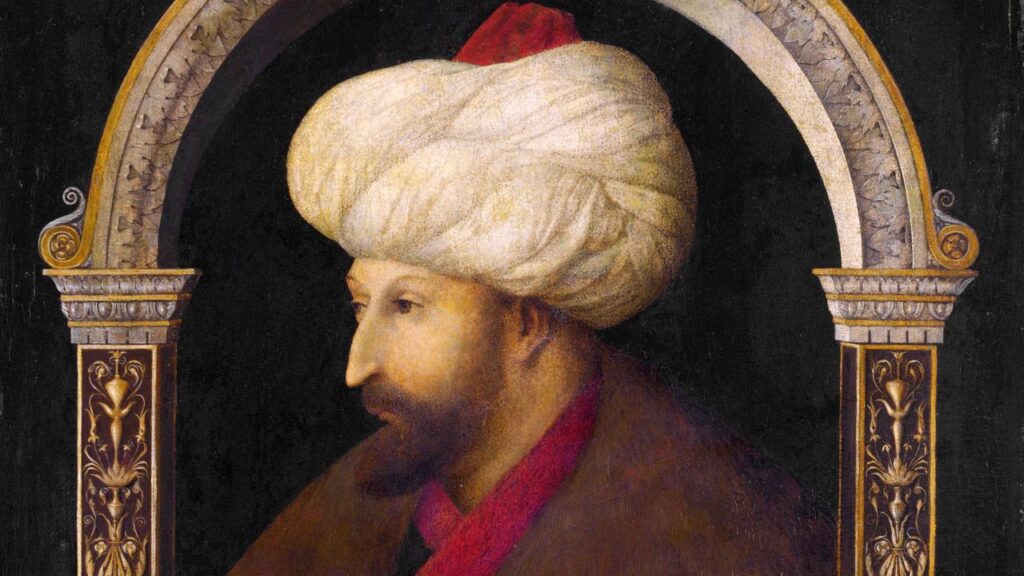
Chris Gratien, professor of history at the University of Virginia and co-founder of the Ottoman History Podcast, says, “The Ottomans were among the first to use artillery extensively in the 15th century.” Mehmed the Conqueror bombarded the fortified walls of the city for weeks until his army managed to breach them, making Constantinople, renamed Istanbul, the new Ottoman capital instead of Edirne. It remained so for more than four and a half centuries.
By overthrowing the Byzantine Empire, historians believe that at that moment, specifically, the Ottoman Empire was born.
A Multicultural State
The Ottomans and most of their officials were Muslims, but the sultans and ruling elite were also strategists and pragmatists regarding the role of religion in their expanding empire.
For the Ottoman battles in predominantly Muslim regions like Egypt, the Ottomans established themselves as the true caliphate without completely erasing the existing political structure of the states they conquered.
As for non-Muslim communities throughout the Mediterranean, they also had some autonomy under Ottoman rule, as Christians and Jews were “protected.”
The Golden Age of the Ottoman Empire
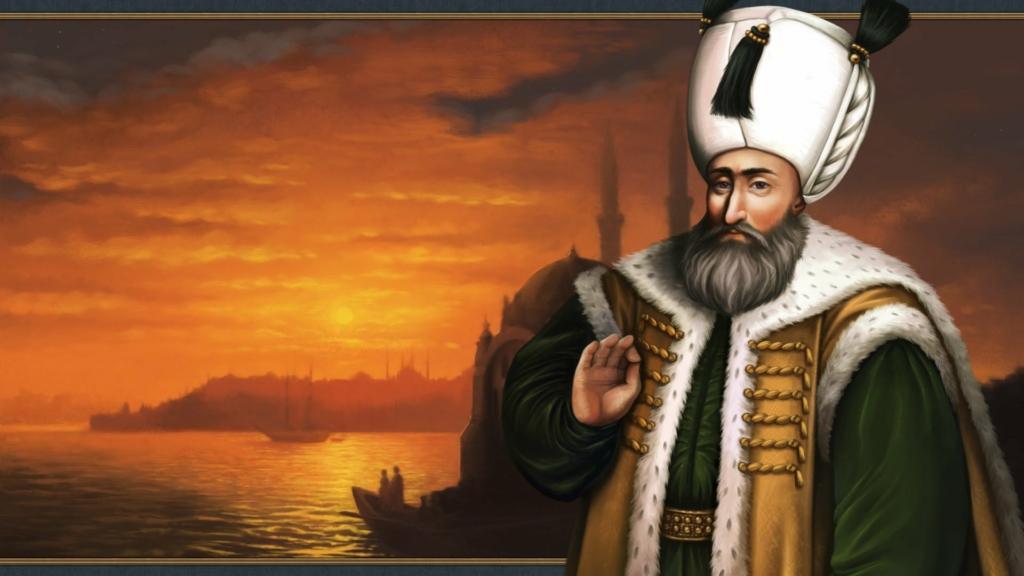
In the 16th century, the Ottoman Empire reached its peak under the rule of Sultan Suleiman the Magnificent, also known as “Suleiman the Lawgiver,” whose reign lasted 46 years. He intended to make his Mediterranean kingdom a major European power after his father, Selim I, had conquered the Islamic Levant by defeating the Mamluk Sultanate in Egypt.
That period witnessed the peak of Ottoman dominance militarily and politically. Suleiman himself led a formidable force of elite fighters known as the Janissaries, whose beginnings were established during the reign of Orhan, the son of the founder Osman.
Suleiman’s reign coincided with a period of immense wealth for the Ottoman Empire due to its control over highly productive agricultural lands (in Egypt) and bustling trade routes in Europe and the Mediterranean.
But Suleiman the Lawgiver’s era was not only characterized by military and political influence and wealth; it also saw the consolidation of justice. In Turkish, Suleiman’s title was Kanuni, meaning “the Lawgiver.”
He sought to present himself as a just ruler according to Islamic traditions. In major cities throughout the empire, citizens could refer their disputes to local Islamic courts, whose records still exist to this day.
This wasn’t limited to Muslims alone; it included Christians and Jews, as well as both men and women. Places were designated for women to seek their rights, such as inheritance or divorce.
Suleiman the Lawgiver’s rule was the pinnacle of Ottoman glory and power, but with his death, we can see the beginnings of the weakness that began to creep into the empire.
Roxelana, the wife of Suleiman the Lawgiver, known as “Hürrem Sultan” in Turkish, started a new era of female political power in the palace, asserting her influence over the life of Suleiman himself and, after him, her son Selim II, marking the beginning of the influence of the “Sultan’s Harem” in the empire. Because of Roxelana’s legacy, many Ottoman women wielded power alongside their husbands and sons, the sultans.
The Beginning of Military Retreat and Internal Reform Attempts
In 1683, a century and a quarter after the death of Suleiman the Lawgiver, the Ottomans attempted to besiege Vienna for the second time, but their defeat came at the hands of an unexpected alliance comprising the Habsburg royal dynasty, the Roman Empire, and the Polish-Lithuanian Commonwealth.
The Ottomans’ failure to seize Vienna not only led to the loss of the city but also resulted in the loss of Hungary and other territories in the war that followed the failed invasion, marking the beginning of the empire’s retreat.
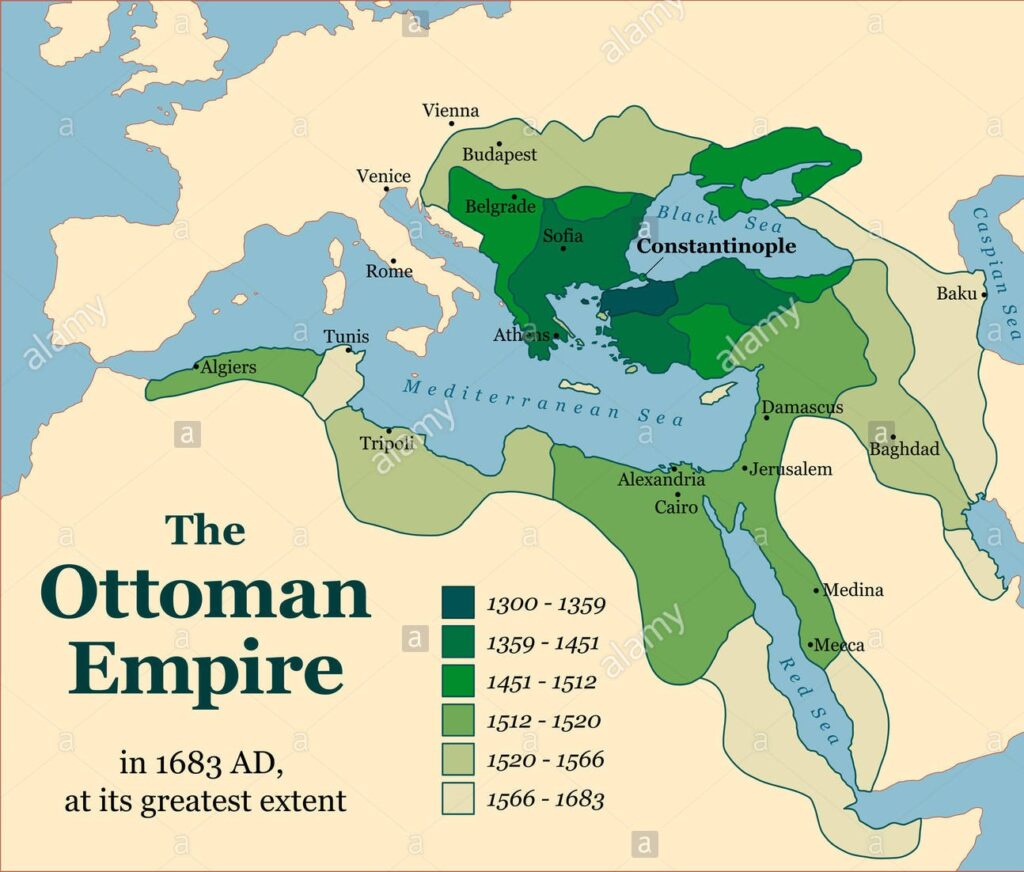
After the Ottoman fighters were considered invincible, they faced defeat after defeat throughout the 18th and 19th centuries, as more Ottoman territories declared independence or were annexed by neighboring powers like Russia.
Mohammed Ali Pasha’s attempt in the mid-19th century to achieve independence for Egypt his conflict with the Ottoman Sultan and his ambition to make Egypt the center of the Islamic state was a significant challenge. Mohammed Ali’s armies reached Ankara, and if it weren’t for the Great Powers’ alliance at the time to thwart his ambitions, the Ottoman Empire might have gone downhill.
However, this change that led to the contraction of the Ottoman Empire was accompanied by another flexibility on the part of the administrative apparatus and its sultans. The state became more centralized and became more involved in the lives of its citizens.
The state increased tax collection and opened public schools and hospitals. During the 19th century, the economy flourished, and the population density increased rapidly, coinciding with painful losses suffered by the Ottoman army. The Ottoman Empire also became a destination for millions of Muslim migrants and refugees from its former territories and neighbouring regions.
“The Young Turks” and the Abolition of the Caliphate
In the late 19th century, the Ottoman Empire experimented with adopting a constitutional monarchy and an elected parliament, influenced by the ideas spreading among the young Ottoman generation who studied in France and Europe. However, this experiment ended in 1878 when Sultan Abdul Hamid II dissolved the institutions and restored his autocratic rule, which lasted for 30 years.
Some attempted to assassinate the recently ruling Sultan, and although the attempt failed, it instilled fear in the young Sultan from his opponents, and his secret intelligence influence began to expand. Additionally, the defiant propaganda from European countries against him was increasing, especially among the generation of the Young Turks who studied in Europe, ultimately leading to the downfall of the Ottoman state.
The leading opposition group at that time was the Committee of Union and Progress, also known as “The Young Turks.” Although its leaders were Turks, it formed a coalition of ethnically diverse groups, including Armenians, Jews, Arabs, Greeks, and Albanians who were subjects of the Ottoman state.
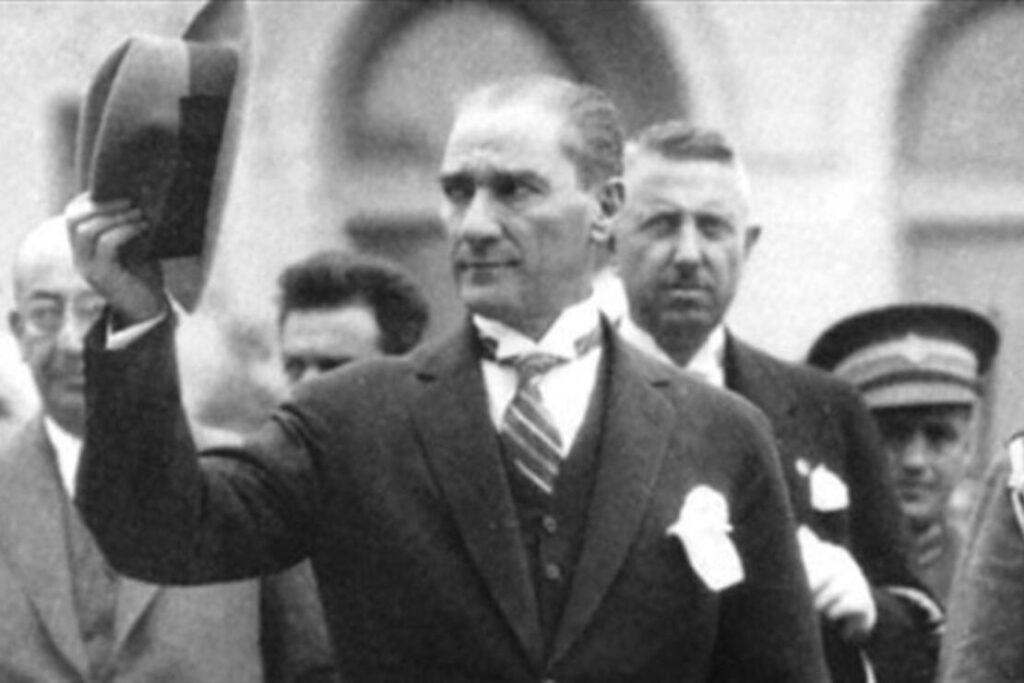
The Young Turks aimed to restore constitutional life, limit the Sultan’s powers, and somewhat revive the glory of the faltering Ottoman Empire. Their success in overthrowing the Sultan in 1908 was widely celebrated as a victory for freedom, equality, and Ottoman brotherhood. However, this movement quickly collapsed due to factionalism and the consolidation of fervent Turkish nationalist youth, leading to increasingly authoritarian rule.
Simultaneously with these internal disturbances, the First Balkan War erupted in 1912, during which the Ottomans lost what remained of their European territories in Albania and Macedonia. As the First World War approached, the weak and militarily backward Ottomans allied with Germany, hoping it would protect them from their historical foe, Russia.
The Ottoman state, along with its ally Germany, was defeated in the First World War, and many ethnic groups began to secede from the Ottoman state, with some being colonized by Britain or France. The Ottoman state and its Turkish youth leaders began their war to resist the occupation of their capital, Istanbul. This is where Mustafa Kemal Atatürk’s role in preserving the capital from occupation and leading the War of Independence against the Greek invasion, supported by Europe, emerged.
The defeat in the First World War represented the final blow to the Ottoman Empire, but the Sultanate did not officially disintegrate until 1922 when the leader of the Turkish national resistance, Mustafa Kemal Atatürk, came to power, establishing a secular republic with its capital in Ankara, not Istanbul. Under the rule of the single-party “People’s Party,” which lasted for decades, Atatürk attempted to eradicate Ottoman institutions and Islamic symbols. He changed the Ottoman alphabet from Arabic to Latin, banned the hijab, attempted to secularize Turkish society as much as possible, introduced Western laws, and laid the foundations for secular Turkey.
Sunna Files Free Newsletter - اشترك في جريدتنا المجانية
Stay updated with our latest reports, news, designs, and more by subscribing to our newsletter! Delivered straight to your inbox twice a month, our newsletter keeps you in the loop with the most important updates from our website



